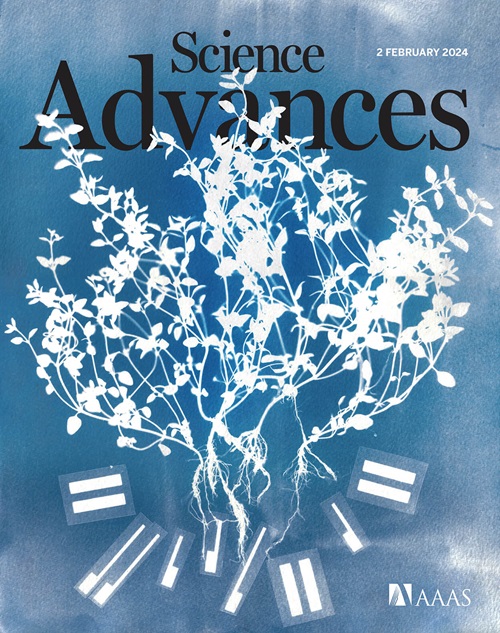电气化低温电镜捕获和成像动态电池纳米界面
IF 11.7
1区 综合性期刊
Q1 MULTIDISCIPLINARY SCIENCES
引用次数: 0
摘要
液体和固体之间的带电界面支撑着多种现象,从电池操作过程中的离子转移到实现生物通信的动作电位。然而,传统的工具对这种亚稳界面的纳米级动力学是盲目的。在这里,我们利用电气化冷冻电子显微镜(eCryo-EM),一种在电池运行过程中快速冻结和动态捕获这些动态非平衡状态的技术,用于纳米级表征。在受控的时间间隔内,带电界面的集体快照量化了固体电解质界面(SEI)的早期生长动力学,SEI是一种控制电子和离子传输的钝化膜。出乎意料的是,两种化学性质和性能不同的SEI薄膜的带电物质的扩散率估计在10%以内,这是由它们的扩散限制SEI生长机制的斜率表明的。相反,反应受限的SEI生长机制的斜率相差3倍,这表明高性能电解质的低反应性是其高库仑效率的主要原因。本文章由计算机程序翻译,如有差异,请以英文原文为准。

Trapping and imaging dynamic battery nanointerfaces via electrified cryo-EM
The electrified interface between a liquid and a solid underpins diverse phenomena, from ion-transfer during battery operation to action potentials enabling biological communication. However, conventional tools are blind to the nanoscale dynamics of this metastable interface. Here, we leverage electrified cryo–electron microscopy (eCryo-EM), a technique that rapidly freezes and kinetically traps these dynamic, nonequilibrium states during battery operation for nanoscale characterization. Collective snapshots of the electrified interface at controlled time intervals quantifies early-stage growth kinetics of the solid electrolyte interphase (SEI), a passivation film that governs electron and ion transport. Unexpectedly, the diffusivity of charged species of the two SEI films with differing chemistry and performance are estimated to be within 10% of the other, indicated by the slope of their diffusion-limited SEI growth regimes. Instead, the slope of the reaction-limited SEI growth regimes differs by a factor of 3, suggesting that lowered reactivity of the high-performance electrolyte is largely responsible for its high coulombic efficiency.
求助全文
通过发布文献求助,成功后即可免费获取论文全文。
去求助
来源期刊

Science Advances
综合性期刊-综合性期刊
CiteScore
21.40
自引率
1.50%
发文量
1937
审稿时长
29 weeks
期刊介绍:
Science Advances, an open-access journal by AAAS, publishes impactful research in diverse scientific areas. It aims for fair, fast, and expert peer review, providing freely accessible research to readers. Led by distinguished scientists, the journal supports AAAS's mission by extending Science magazine's capacity to identify and promote significant advances. Evolving digital publishing technologies play a crucial role in advancing AAAS's global mission for science communication and benefitting humankind.
 求助内容:
求助内容: 应助结果提醒方式:
应助结果提醒方式:


